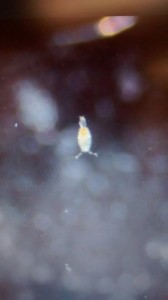2th March, 2016
It is one more day of calm waters. As every day the shift of my team began at 8 a.m. after breakfast. Then, we tried to fix the uCTD and we could do it. The routine in these three days are being very busy, we don’t stop, because every time we have something to sample or to research, but it is OK, we are here for that, and we just have 19 days, or as now 16 days left to do our research.

Students are fixing uCTD.
I am very happy because now I am working with the mainly organism of zooplankton’ community, which are the organism that feed on phytoplankton. They are important consumers in marine ecosystems, forming a link between primary producers and pelagic predators. Moreover, zooplankton products slowly, yet consistently, rain down on the dark seabed, sustaining diverse benthic communities of sponges, echinoderms, anemones, crabs, and fish.
Zooplankton also plays an important role in shaping the extent and pace of climate change. The ocean’s ability to act as a sink for CO2 relies partially on the biological pump. Here zooplankton plays an important role in the biological pump because much of the CO2 that is fixed by phytoplankton is eaten by zooplankton and eventually sinks to the seabed.
Zooplankton organisms are highly sensitive to environmental variations such as seasonal changes in water masses, inducing seasonal successions and fluctuations in the abundance, and distribution of various communities or species in aquatic ecosystems. Thus, several zooplankton organisms are commonly used as indicators for water masses and oceanic currents.

Picture from a multinet sample from the microscope

Picture from the same sample of one copepods genus Oncaea.
